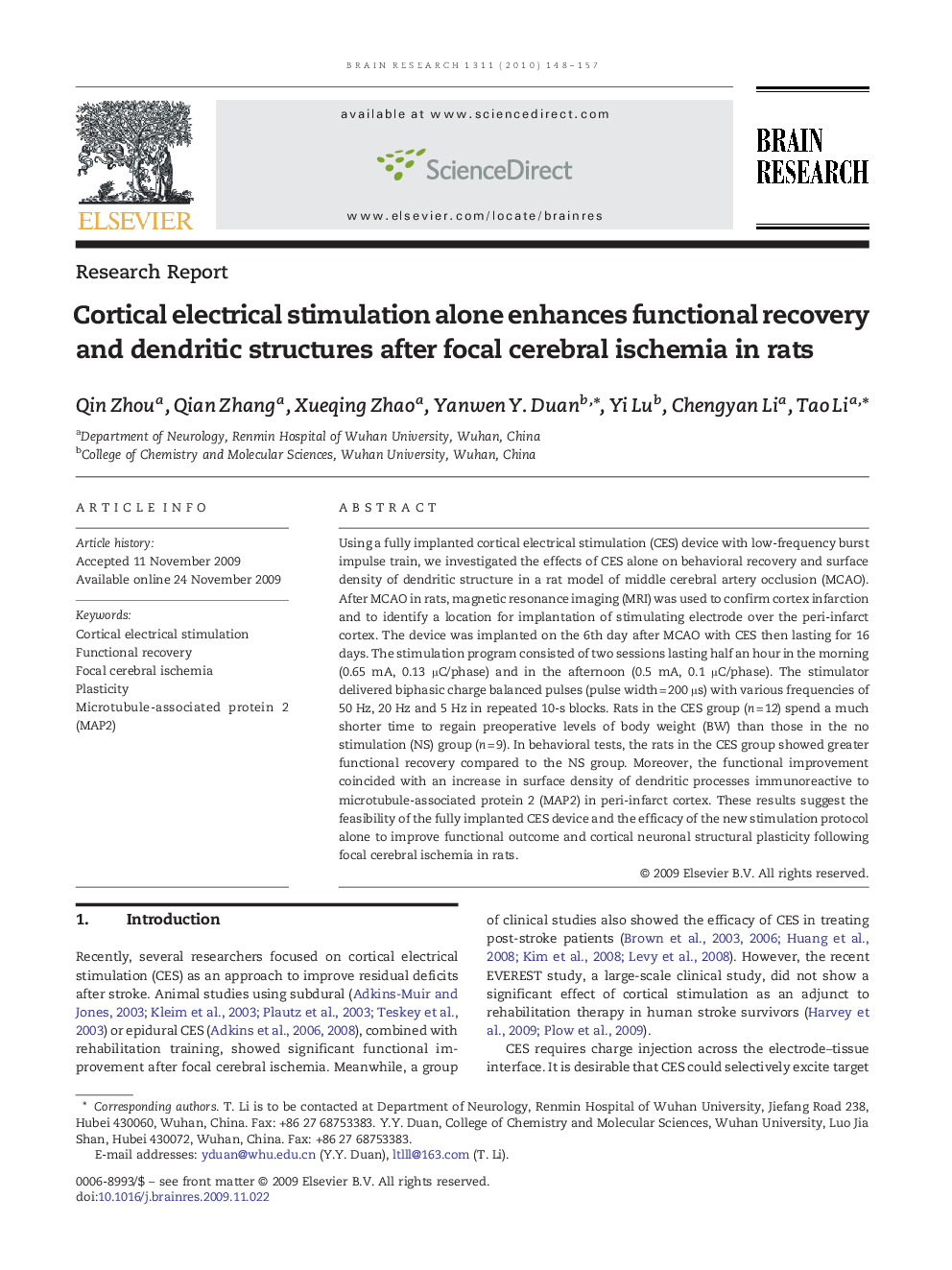| Article ID | Journal | Published Year | Pages | File Type |
|---|---|---|---|---|
| 4327489 | Brain Research | 2010 | 10 Pages |
Using a fully implanted cortical electrical stimulation (CES) device with low-frequency burst impulse train, we investigated the effects of CES alone on behavioral recovery and surface density of dendritic structure in a rat model of middle cerebral artery occlusion (MCAO). After MCAO in rats, magnetic resonance imaging (MRI) was used to confirm cortex infarction and to identify a location for implantation of stimulating electrode over the peri-infarct cortex. The device was implanted on the 6th day after MCAO with CES then lasting for 16 days. The stimulation program consisted of two sessions lasting half an hour in the morning (0.65 mA, 0.13 μC/phase) and in the afternoon (0.5 mA, 0.1 μC/phase). The stimulator delivered biphasic charge balanced pulses (pulse width = 200 μs) with various frequencies of 50 Hz, 20 Hz and 5 Hz in repeated 10-s blocks. Rats in the CES group (n = 12) spend a much shorter time to regain preoperative levels of body weight (BW) than those in the no stimulation (NS) group (n = 9). In behavioral tests, the rats in the CES group showed greater functional recovery compared to the NS group. Moreover, the functional improvement coincided with an increase in surface density of dendritic processes immunoreactive to microtubule-associated protein 2 (MAP2) in peri-infarct cortex. These results suggest the feasibility of the fully implanted CES device and the efficacy of the new stimulation protocol alone to improve functional outcome and cortical neuronal structural plasticity following focal cerebral ischemia in rats.
